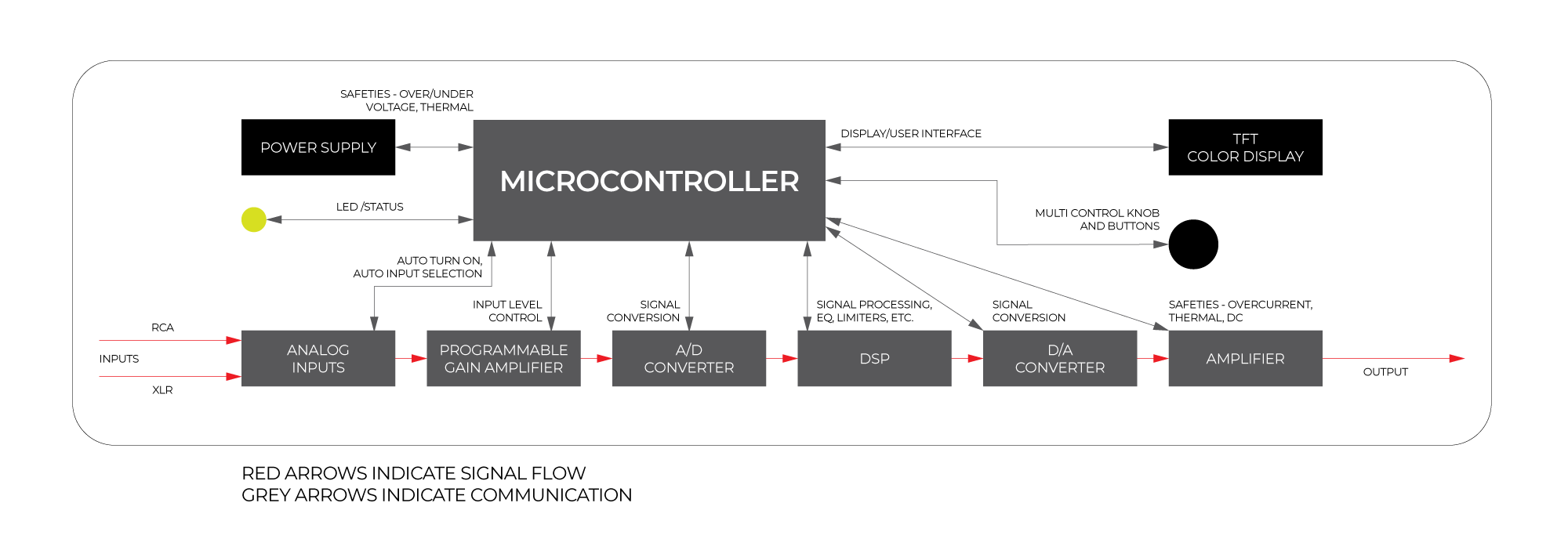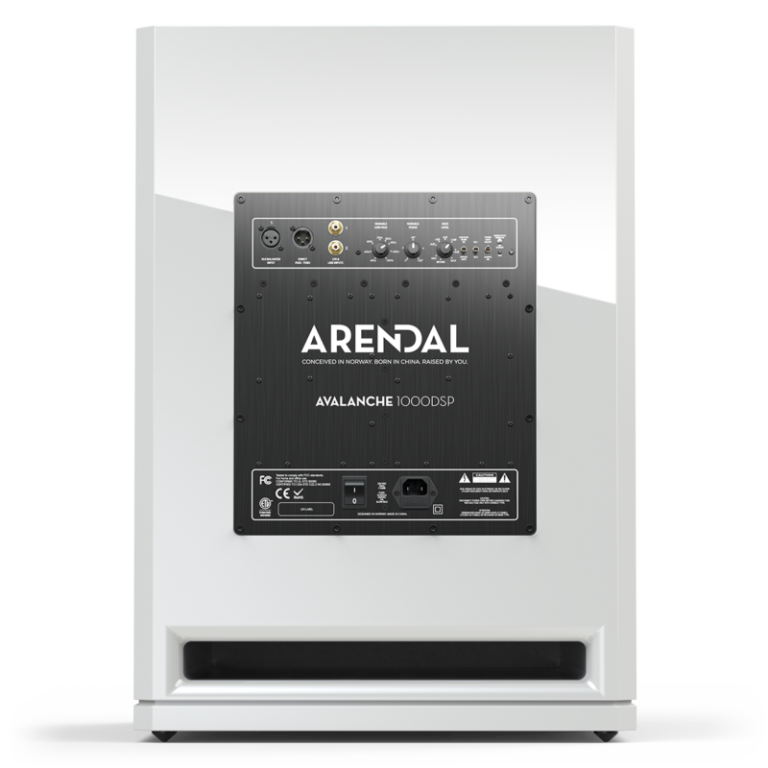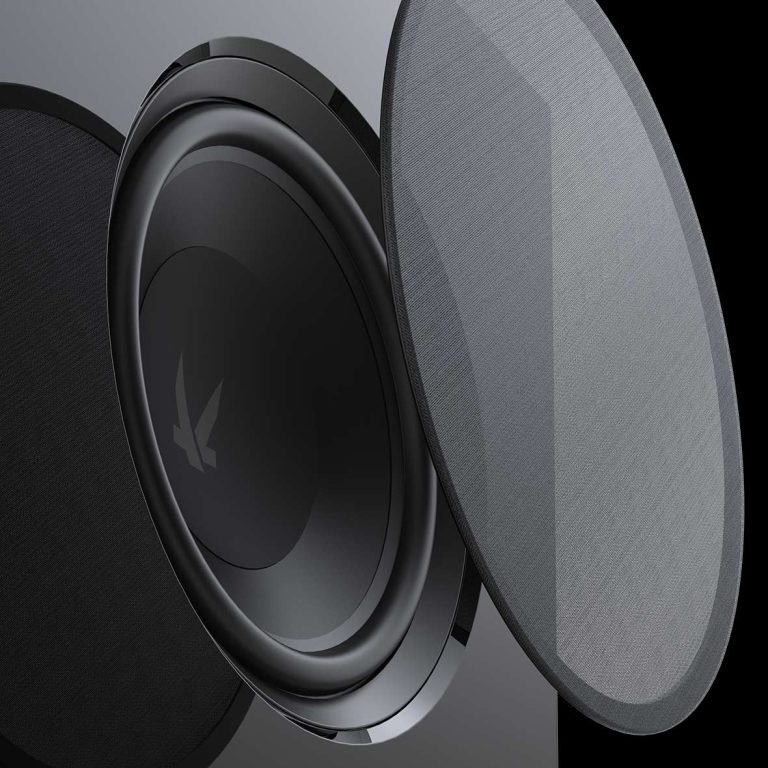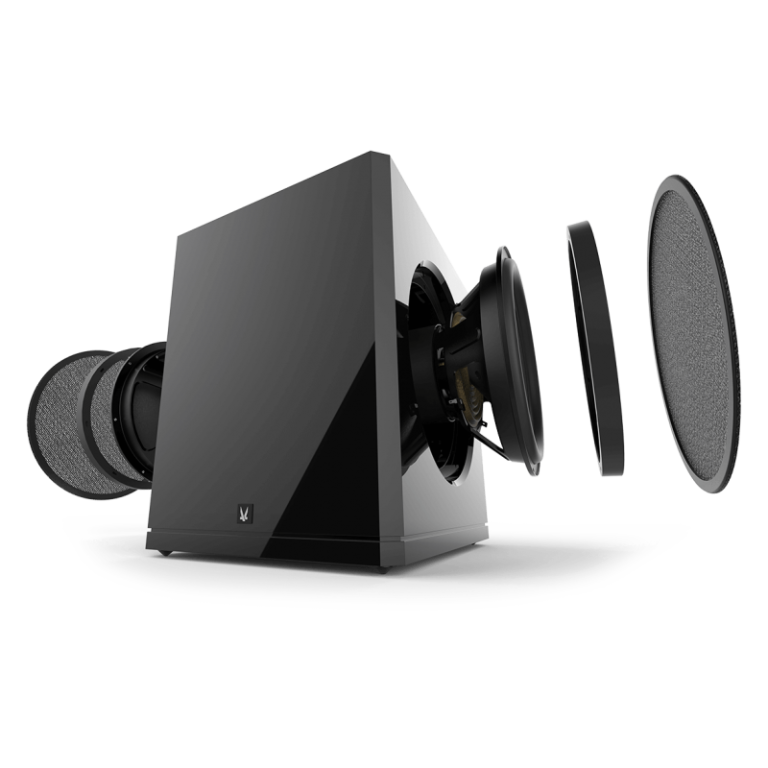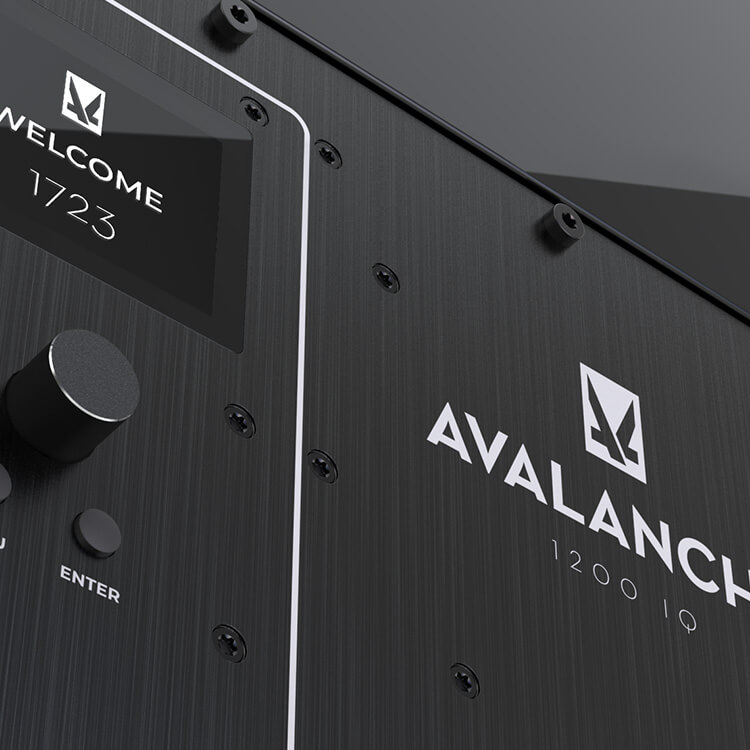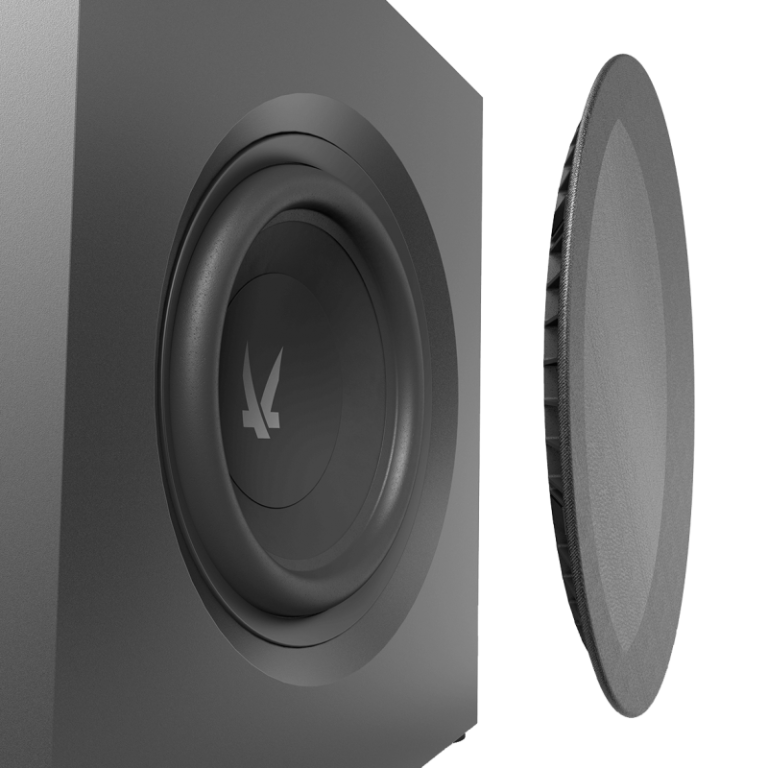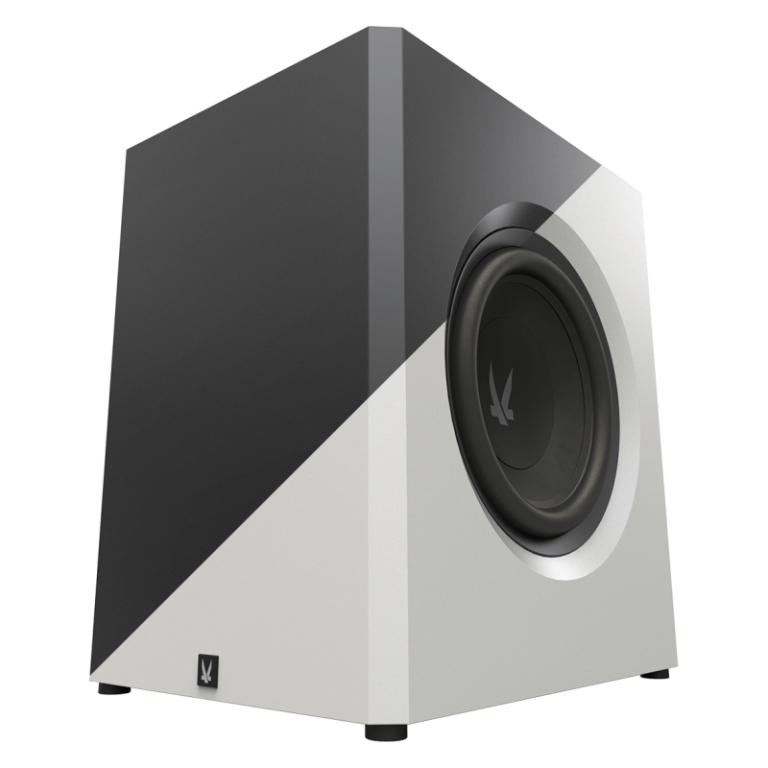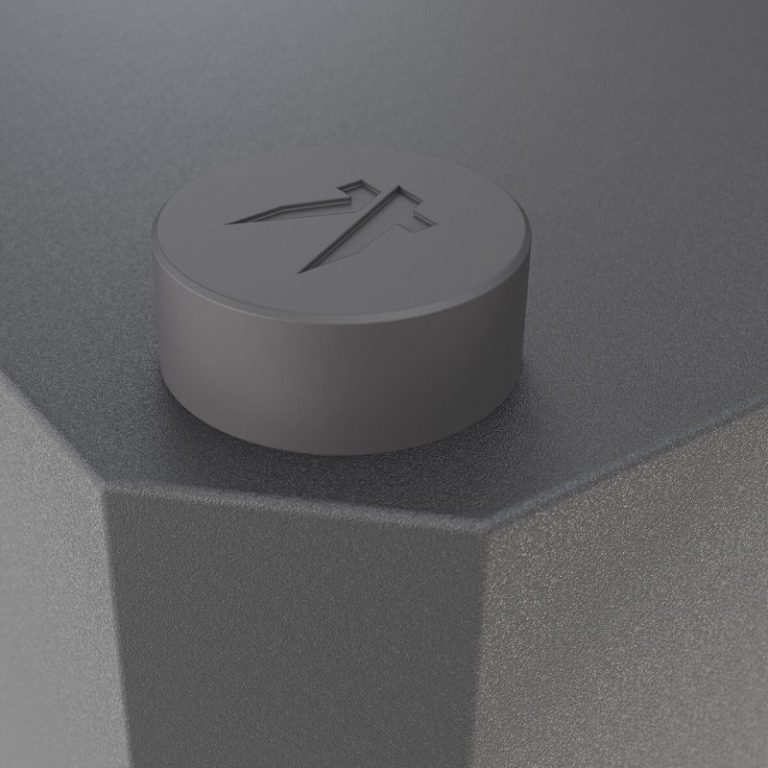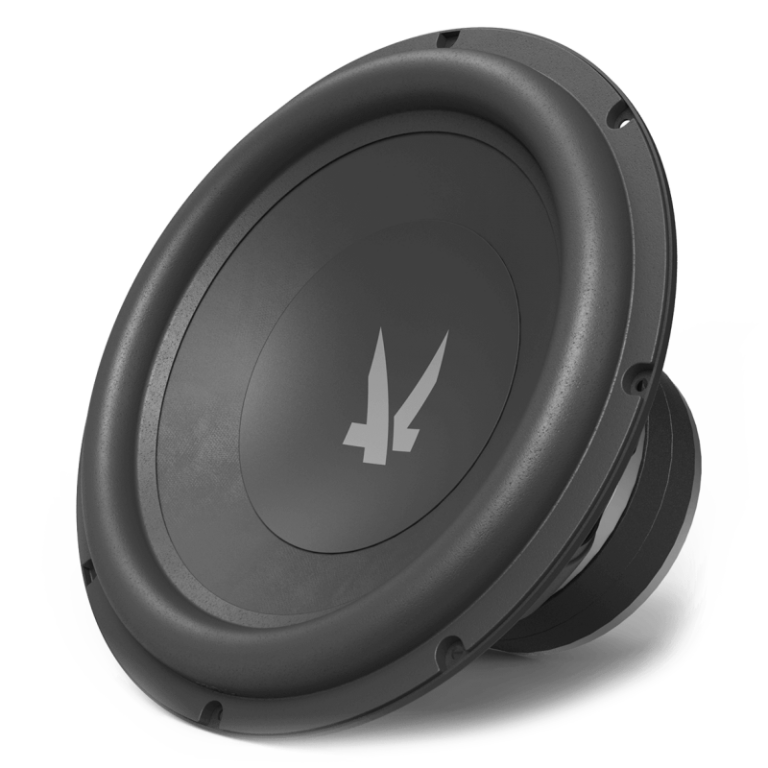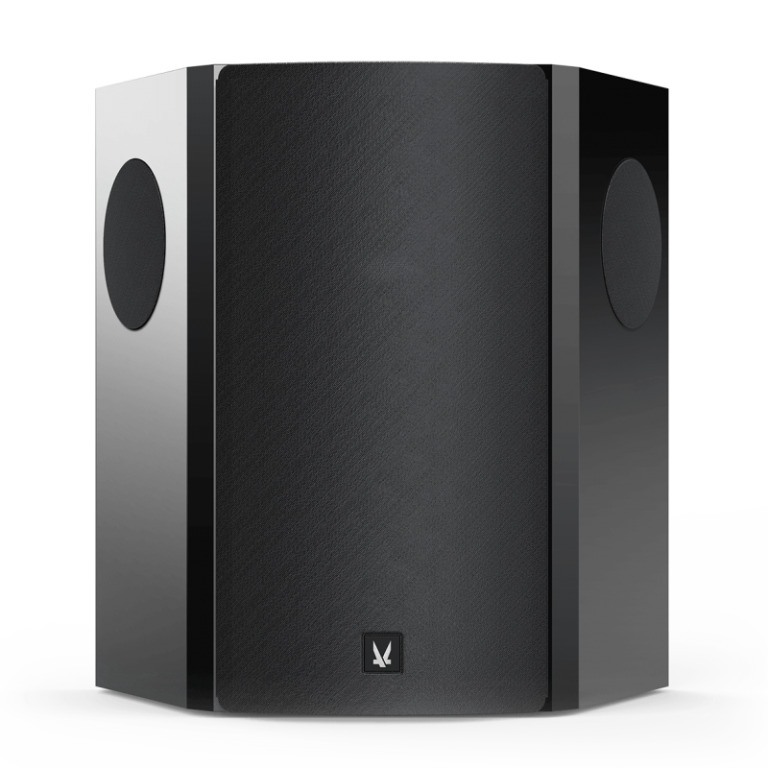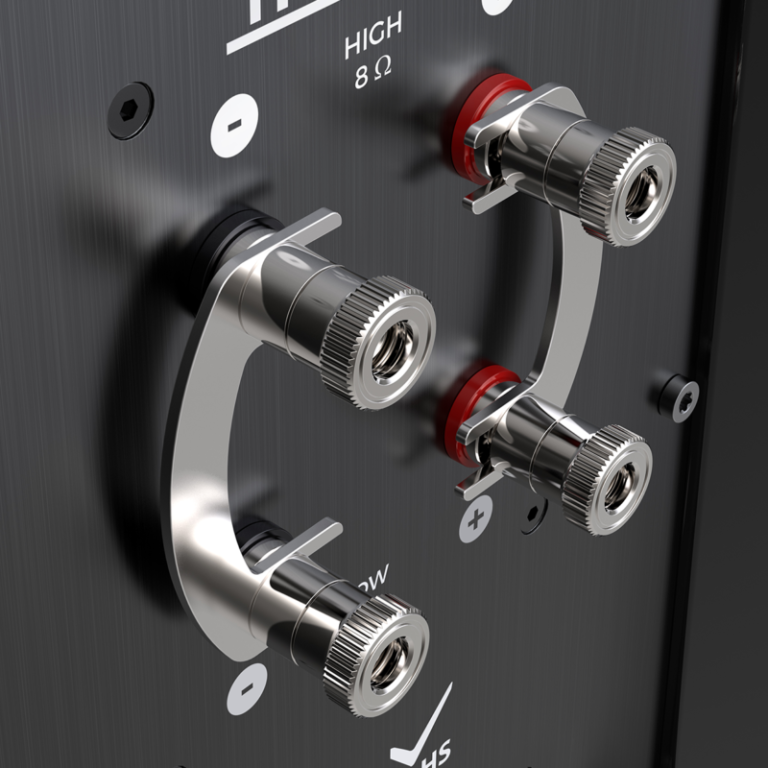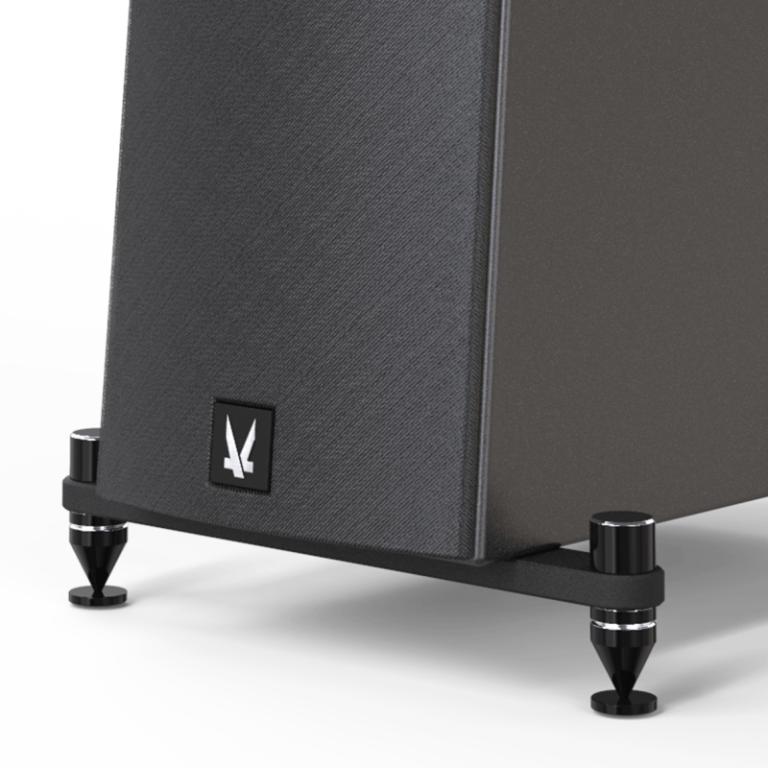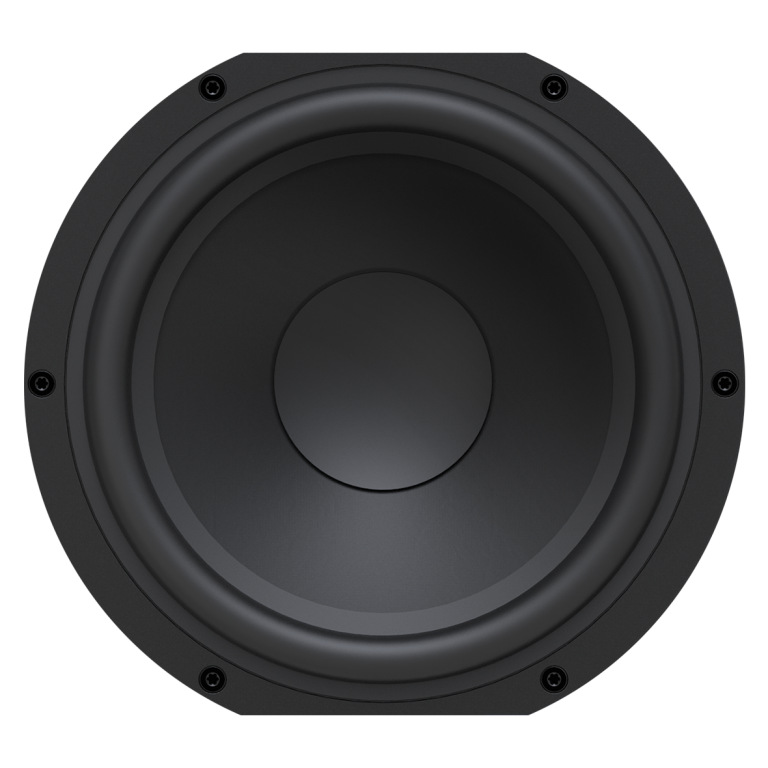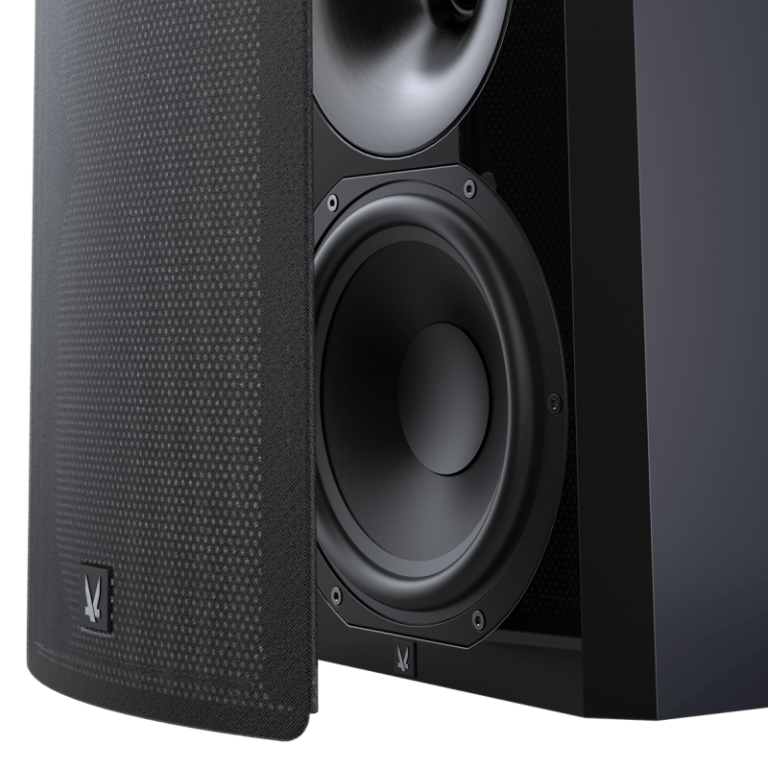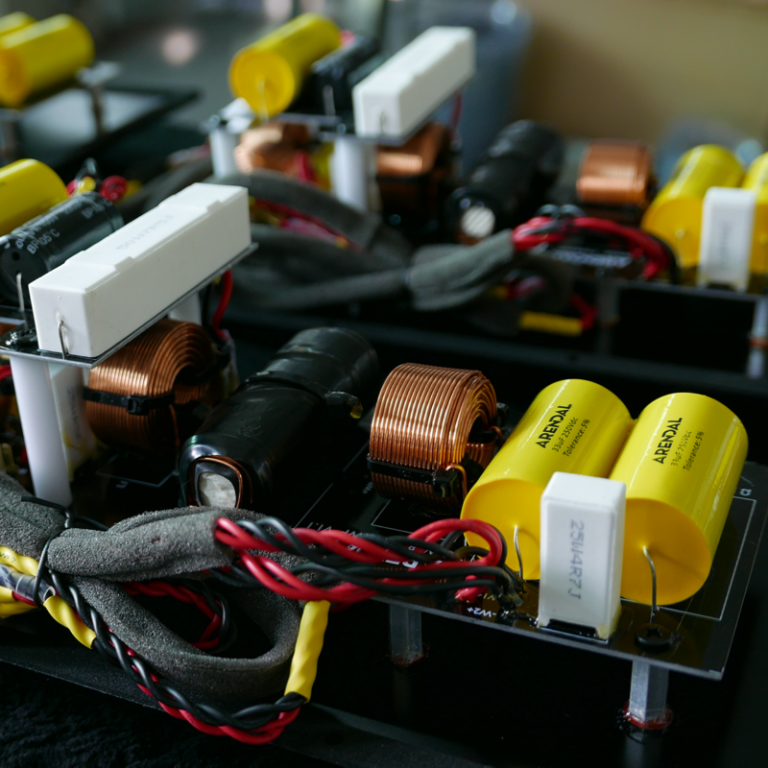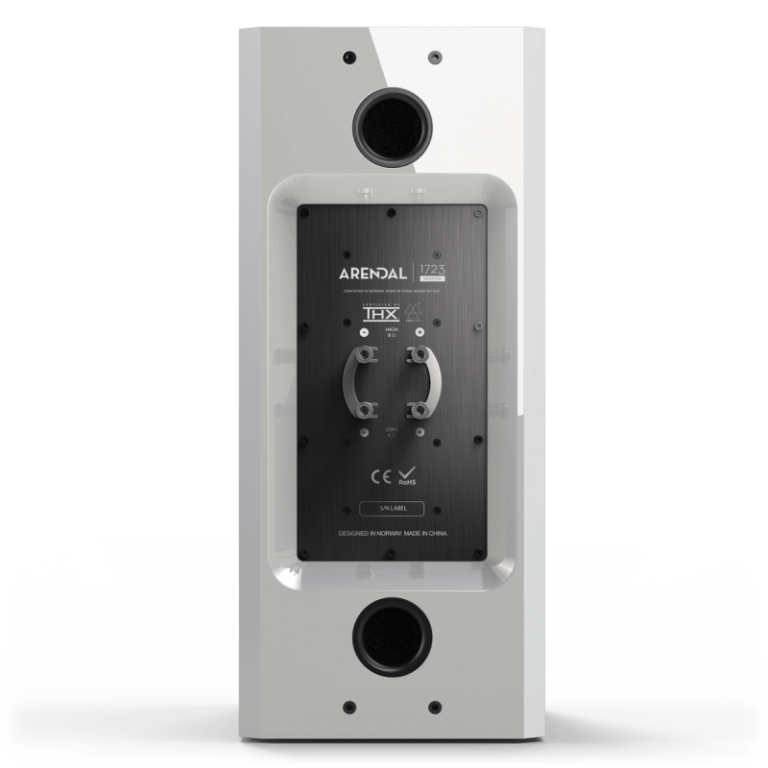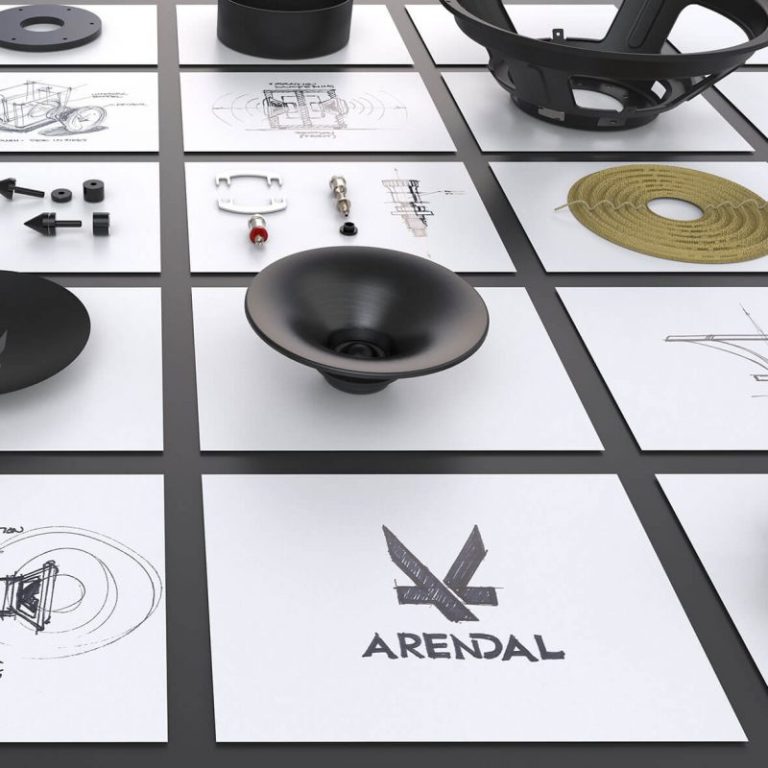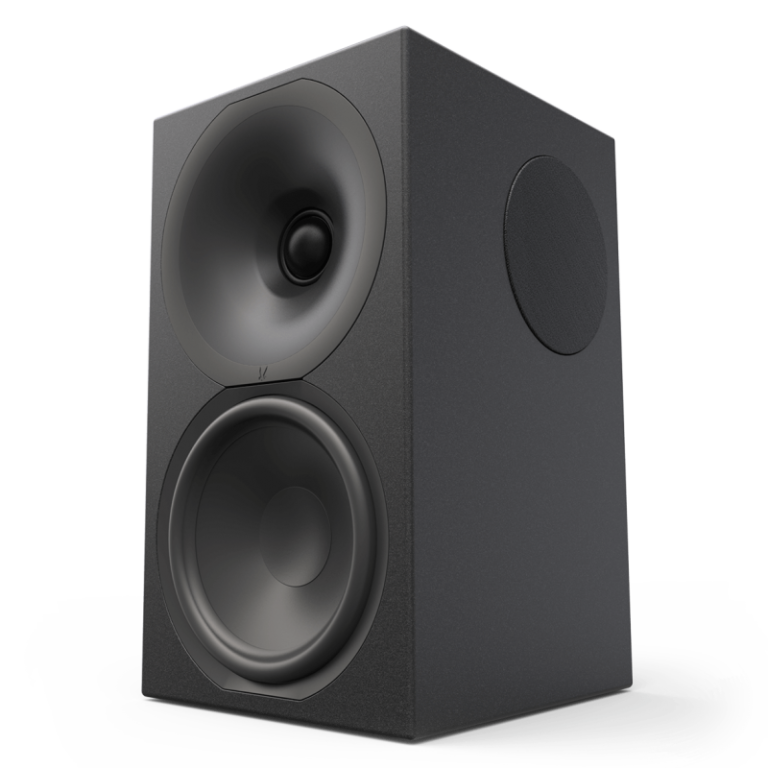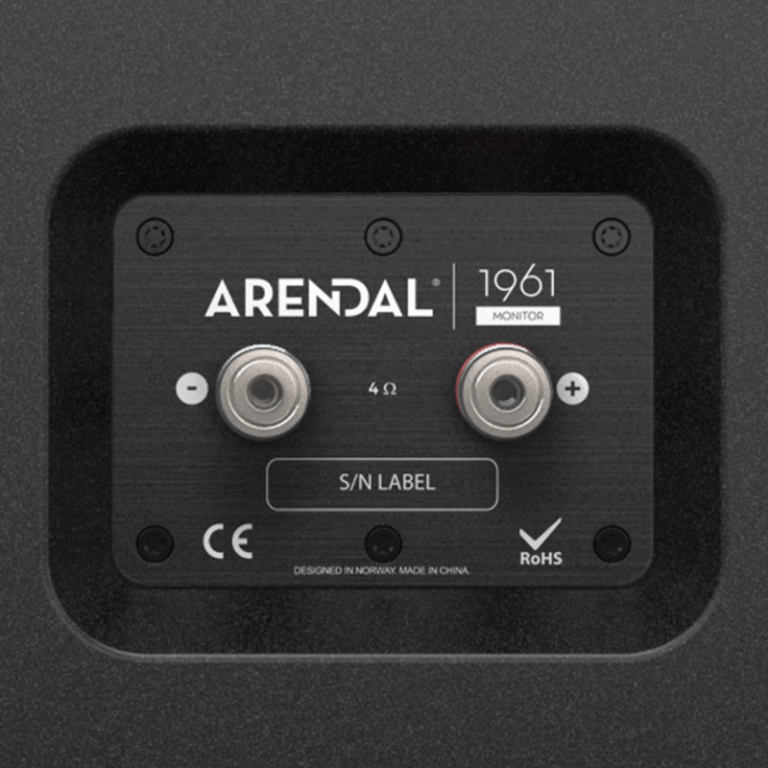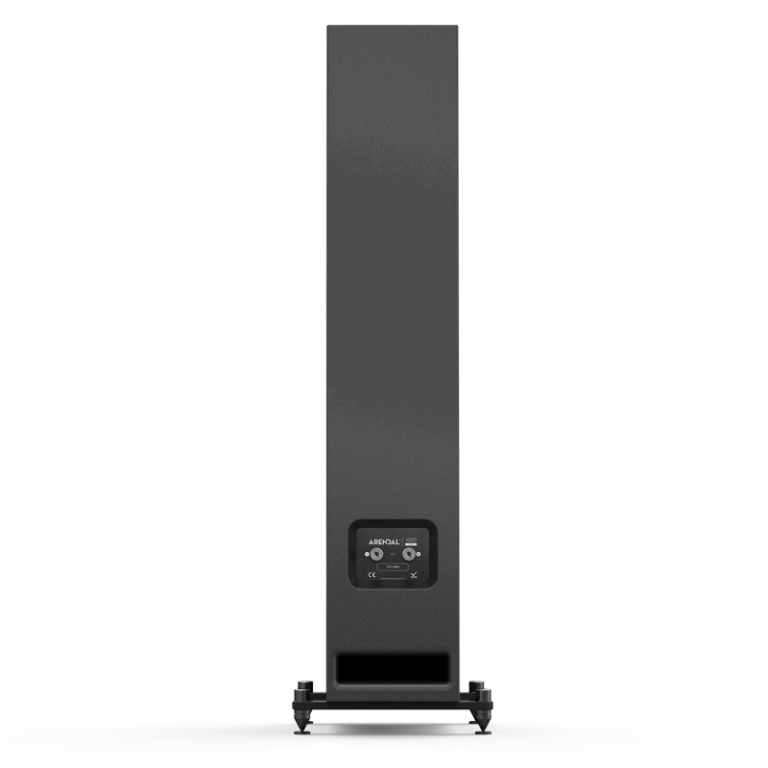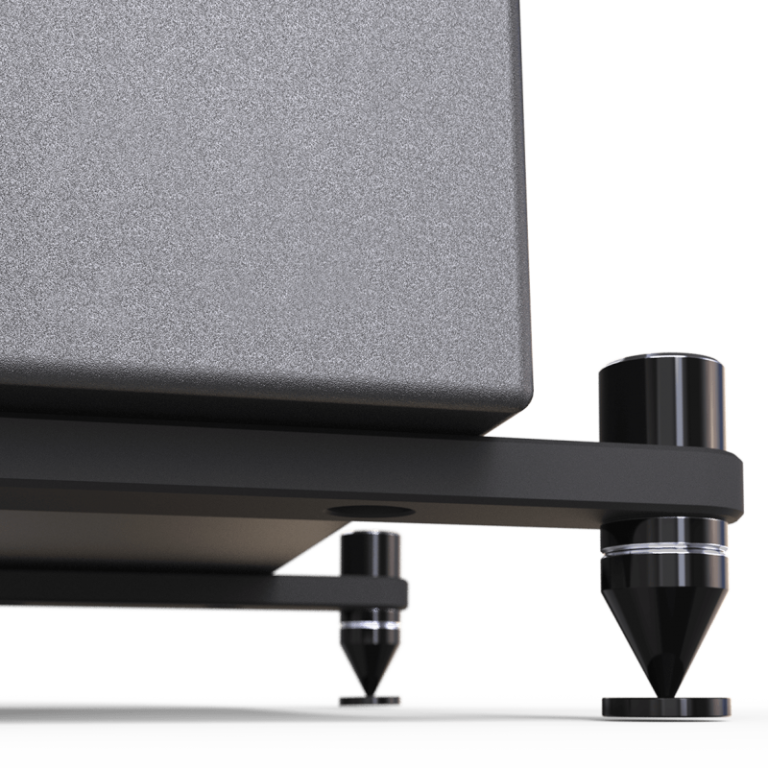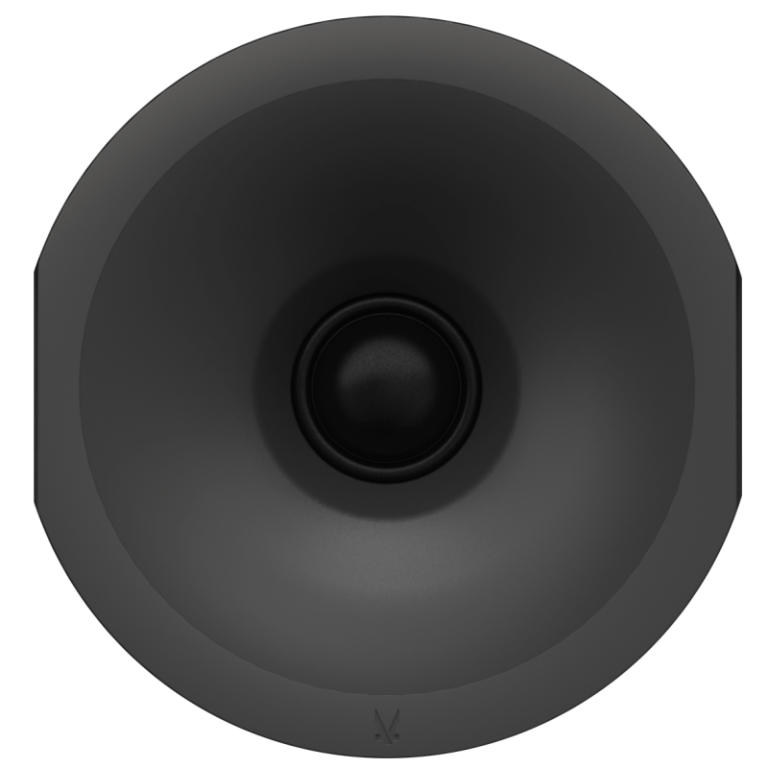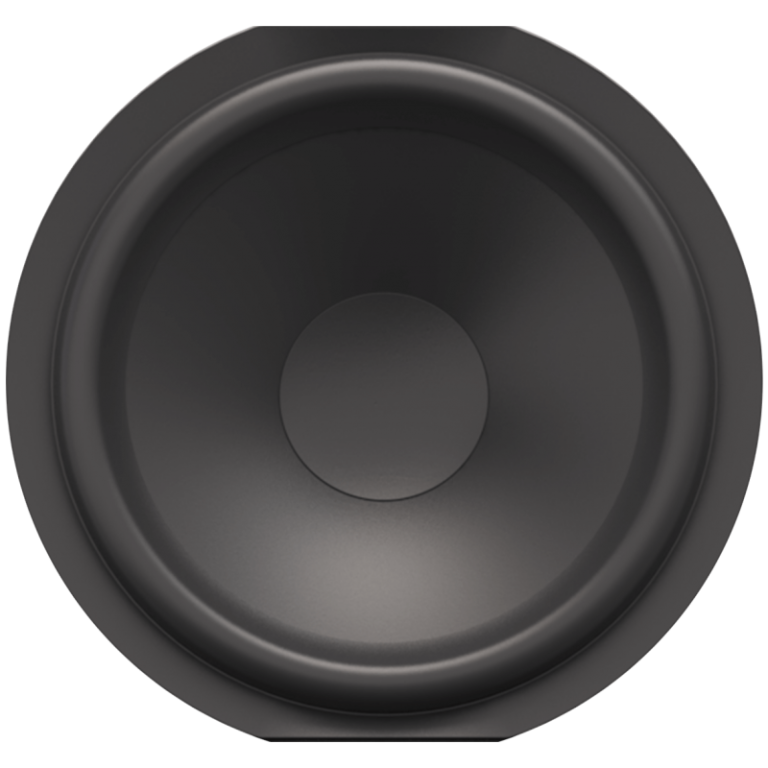Highlights
- High resolution 1.8” LCD display
- Smart amplifier technology
- Full 550W RMS down to 10Hz
- Extensive multi sensors to protect and preserve signal quality
- Safety controls
Intelligent Technology
´Intelligent´ is rarely used in the audio industry, especially for speakers and subwoofers. The new Avalanche 550 IQ subwoofer amplifier from Arendal Sound is one exception, measured in performance and technology. State of the art amplifier designed and developed from scratch to give performance and features you could not get before.
The Avalanche 550 IQ boast killer performance and has features under the hood yet unseen in the industry. Multiple sensors in the digital and analog domain, from inputs to outputs to preserve dynamics and clean bass. It has a powerful microcontroller (MCU) which is the brain that controls and reads all data that passes the signal flow. To make sure the signal is as untouched as virtually possible, from its original source to the output from the subwoofer.
Research and development over two years, fully customized by Arendal Sound. The Avalanche 550 IQ is a smart and intelligent beast of an amplifier.
Avalanche 550 IQ Features
Highlights
- Hi resolution 1,8” LCD colour display
- Dual Source assignable RCA inputs
- Selectable 12V trigger and auto-on functions for each input
- RCA passthrough outputs
- User adjustable on-time and auto-on wake-up settings
- Variable phase & signal invert
- EQ modes & 3 band Parametric EQ
- Low pass filter & slopes
- Subsonic filter & slopes
Subwoofer amplifiers will never be the same again with the new Avalanche IQ technology.
High resolution display user interface
With few features added to a subwoofer amplifier, it needs few buttons and switches. However, with the Avalanche 550 IQ amplifier, it offers features outside the scale in this price range where physical buttons would not fit the amplifier plate even if we wanted to. The 1.8” High Resolution colour display will give you a clear overview of all settings for your subwoofer. With the multi control knob and buttons with great tactile feedbacks, you will make any setup and adjustment a breeze.
Avalanche 550 IQ offers a ton of features that are unheard of in this price range.
RCA I/O
Avalanche 550 IQ has some aces on its hands. First, it has RCA in- and outputs, but that’s just where it starts.
3-12V trigger
If you have hidden your subwoofer behind a sofa or inside a baffle wall and still want to dictate it being on or off (not using the auto on function) we have a 3-12V trigger connection with 3.5mm jack. The Avalanche 550 IQ listen to your source control and powers up when your system does, then powers down when you turn your system off.
Auto on/off
Auto on is a feature that wakes up the subwoofer when you start playing material from the connected source. Most subwoofers on the market have different wake up sensitivity which can bring problems for some systems since you cannot change the sensitivity on its inputs.
We did not give you just one option with Avalanche 550 IQ. With the new auto on function you have multi-level to choose from so you can get your subwoofer to wake up at the right time you play sound. Choose between low, medium and high wake up sensitivity and you are set for a seamless use of your subwoofer.
Times where you need to crank up the master volume to get the subwoofer turning on is gone with the new auto on feature.
On time
To save energy, it’s important that your equipment shuts down when it’s not in use. Avalanche 550 IQ lets you decide when it should sleep after use by 5-60 minutes with 5-minute increments.
Dual Source Input
Are you combining stereo and multi-channel equipment in one system and you want to use one subwoofer system for both? Yes, we got you covered! This is a unique feature only provided from Arendal Sound through the intelligent amplifier, Avalanche 550 IQ. With your new subwoofer you can control which input you want to be used from your stereo and AVR so it locks to that single input only. You can lock the signal to input 1 or 2, or you can also select 1 and 2 at the same time. This means you can control the inputs based on what you are playing, and Avalanche 550 IQ manage signal flow in both your systems.
Old school fiddling with adapters and connecting back and forth with multiple subwoofer adjustment going from stereo to AV, and the other way, is gone. Thanks to Avalanche 550 IQ.
Variable phase & Signal invert
Avalanche 550 IQ is equipped with both adjustable phase and signal invert. Signal invert inverts the signal, which means the same as 180 degrees phase, however this is “true” 180 degrees at all frequencies. Where variable phase will slightly move depending on frequency, as on all variable phase shifts. These two settings are very handy to get the perfect alignment in a stereo system where there is no processor that can time delay the signal.
EQ Modes & Parametric Equalizer
We offer two EQ modes to choose from, where you get a flat frequency response in half space down to under 20Hz in EQ1 mode, and EQ2 mode will start tapering off at a steady pace around 40Hz. The latter will typically work very well for smaller rooms or in music playback where slightly less deep bass is preferred.
Avalanche 550 IQ also has a built in 3-band PEQ that can be tailored to suit your room. It is extremely accurate to enable a perfect integration in your room. Where the frequency is set at 1Hz-increments and the Q is adjustable all the way from 0.3 up to 10, so you can target sharp irregularities in your room response.
Levels & Input gain
The Avalanche 550 IQ amplifier is equipped with an adjustable input gain to match your source output level, as well as an adjustable master level for perfect integration in your setup. You also have the option of setting the level to reference position, which is recommended for most users with an AVR. For ease of use we have also incorporated a feature that allows you to select reference level for multiple subwoofers used together in the same setup.
Low Pass Filter and Slope
Low Pass Filter (LPF) is selective on or off and can be adjusted to 30-160Hz with 1Hz increments. Also, for the feinschmecker, the LPF slope can be adjusted with 6/12/18/24dB filter curves to tune the subwoofer perfectly for your system. You are of course able to adjust phase by 10-degree increments and full signal invert (on/off).
Subsonic Filter and Slope
Subsonic filter is user selectable and adjustable from 12 to 31 Hz, or you can completely turn it off. The slope is also adjustable from 6 to 12 dB pr. octave. This feature can come in handy to get the deep bass level properly adjusted for your room or preferences. The amplifier has a built-in subsonic filter that is enabled at 10 Hz, to protect the amplifiers power supply.
Avalanche 550 IQ Technology
Power amplifier
Each bridged power amplifier module has a 32-bit microcontroller (MCU) for control and monitoring purposes. This MCU communicates with the MCU in the Digital Front End PCB.
The power amplifier module MCU utilizes 5 channels of A/D (analog to digital) conversion to monitor the following parameters in real time at a rate of 1000 samples/second:
- The output voltage of amplifier A and B (the two halves of the bridged amplifier)
- The power supply rails (positive and negative voltages)
- The module temperature sensor
By monitoring these parameters and the over-current detector, fault conditions can be instantly recognized and will result in the amplifiers being shut down immediately.
Safety and reliability
Certain strategies are employed to increase the margin of safety and reliability: For example, the power supply rail voltages are measured before the power amplifiers are enabled. If either rail voltage is outside of the normal limits, the amplifiers will not be enabled, and the power supply will be shut down. Since this is a bridged amplifier, the output voltages of both amplifiers should always be equal and opposite (A+B=0).
If there is a fault condition in either amplifier, the MCU can recognize it within 1 millisecond (1/1000 of a second, ms) and shut down the amplifiers. A typical single-ended power amplifier with an analog offset detection circuit must have a long time constant (> 100ms) to distinguish between DC and a low frequency signal.
Startup logics
All of the parameter margins (limits) are part of the Digital Front End firmware. They are downloaded to the amplifier module(s) at power on. In the case of any fault condition, the power amplifier MCU will inform the Digital Front End MCU and include the specific fault information.
The strategy for each type of fault is decided by the Digital Front End MCU firmware. For example, an amplifier restart may be tried in case of an over-current condition with a limit of X number of restarts.
Troubleshooting
To make troubleshooting easier, the Digital Front End MCU will display the error information on the LCD display in case of a fault condition.
The power amplifier MCU also keeps statistical information that could be used in a variety of ways: Number of clipping events, maximum and minimum values for all monitored parameters (such as max/min rail voltages). This will be crucial for the Arendal Sound engineers to understand if there are any problems or strange behaviour of the amplifier.
Self-testing
The Digital Front End can run a complete self-test of the entire system. This includes generating a test tone and measuring the amplifier output voltages and all other parameters. Any failure will be displayed on the LCD screen.
ROHS, FCC and CE certified.











